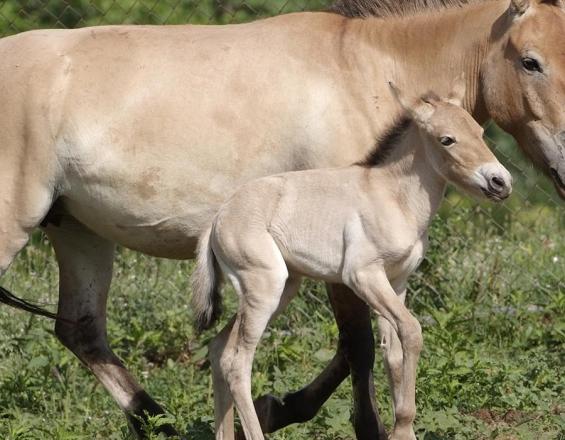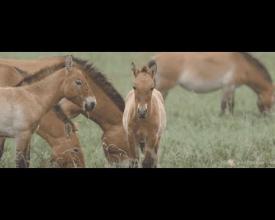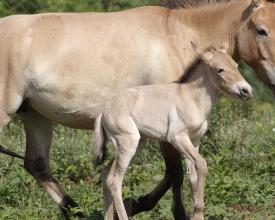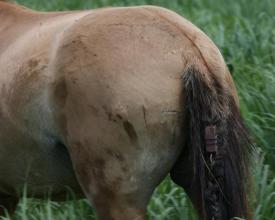
Saving the last wild horse species through GPS satellite tracking and community involvement

Scientists at the Smithsonian Conservation Biology Institute’s Conservation Ecology Center are working to save Przewalski’s horses (Equus ferus przewalskii), the last surviving wild horse species.
The team of experts partnered with China’s Xinjiang Forestry Department and The Wilds to develop new, cutting-edge GPS tracking devices that are small, solar-powered transmitters that can be braided into the tail hair of a horse.
Smithsonian scientists also worked with partners reintroducing the horses back into the wild, to build capacity of project staff and students, and to increase local community involvement through workshops, discussion groups, and the establishment of a scouting program. The latter provides critical economic opportunity for local people through participation in monitoring the horses during winter.
Impacts
New, lighter GPS tracking transmitters are deployable without a collar, providing an opportunity for innovating new methods that are comfortable for horses. This would also make it possible to track stallions, who can’t be tracked with collars because they get destroyed when they fight other males. The new transmitters are also solar powered, which extends their lifetime beyond what is currently possible with conventional tracking collars. These innovations could allow researchers to monitor the horses more effectively, better understand their ecology and ecosystem, and use what they learn to enhance their chances for their long-term survival. Understanding the movement ecology of the horses is crucial for conservation management.
Przewalski’s horses used to range freely in the wild and are integral to a healthy steppe ecosystem. Reintroducing these horses to the wild strengthens and expands their population -- maintaining biodiversity and bringing the species back from the brink of extinction.
"Conservation has to be built on science, but science cannot be successful without people,” says Melissa Songer Conservation Ecologist at Smithsonian. With this belief in mind, Smithsonian scientists work to engage the local community through training and by hiring local people to participate in data collection. The capacity-building and involvement of local communities is key to success.








